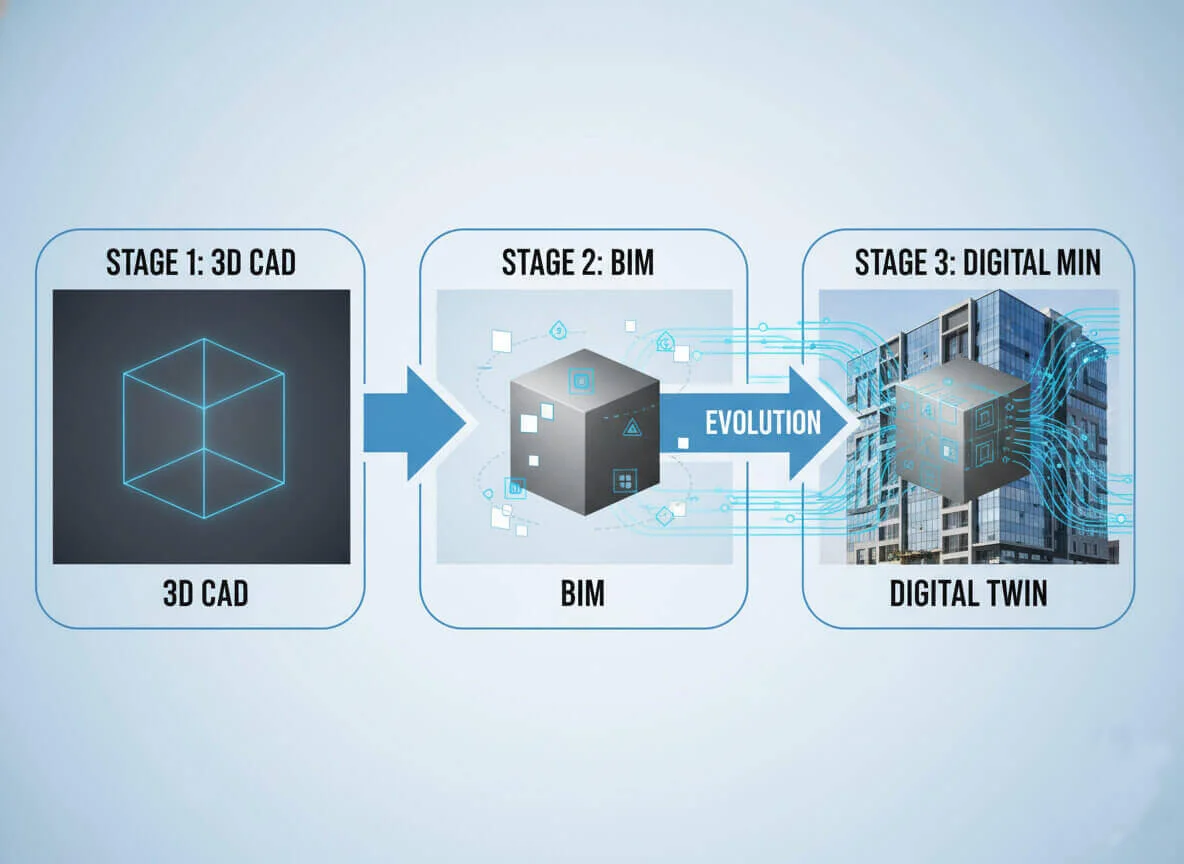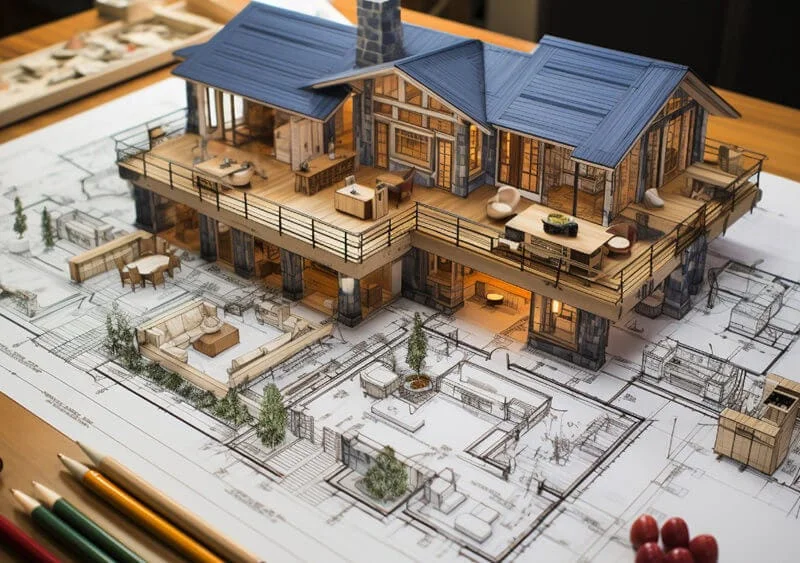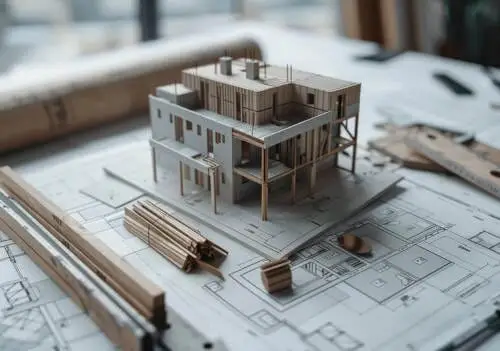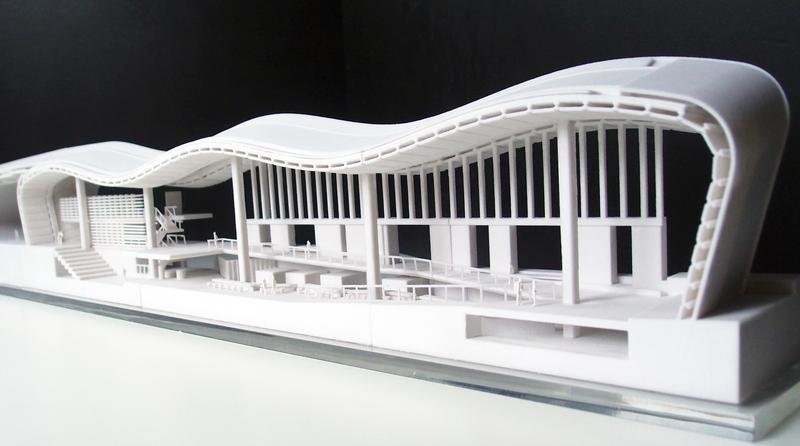Ti sei mai trovato in un cantiere caotico, trying to decipher a 2D blueprint, only to discover a critical clash between the plumbing and a structural beam? It’s a scenario that plays out all too often, leading to costly rework, frustrating delays, and strained client relationships. Per decenni, the Architecture, Ingegneria, and Construction (AEC) industry has grappled with these challenges, relying on abstract drawings that leave too much to the imagination. But what if you could build your entire project perfectly in a digital world before a single shovel hits the ground?
This is the transformative promise of 3D modeling. Al centro, 3Modellazione D is the process of creating a three-dimensional digital representation of a building, which serves as a single, unambiguous source of truth for the entire project lifecycle. Its primary benefits for architects and contractors are a seismic shift in workflow: enabling dramatically improved visualization, powerful early error detection, seamless team collaboration, e alla fine, significant cost and time savings. This guide provides a comprehensive exploration of how this technology is revolutionizing the AEC industry, covering its core benefits, the different types of modeling, the software you need to know, and advanced applications that are shaping the future of construction.
Sommario
What is Architectural 3D Modeling? A Foundation for Success
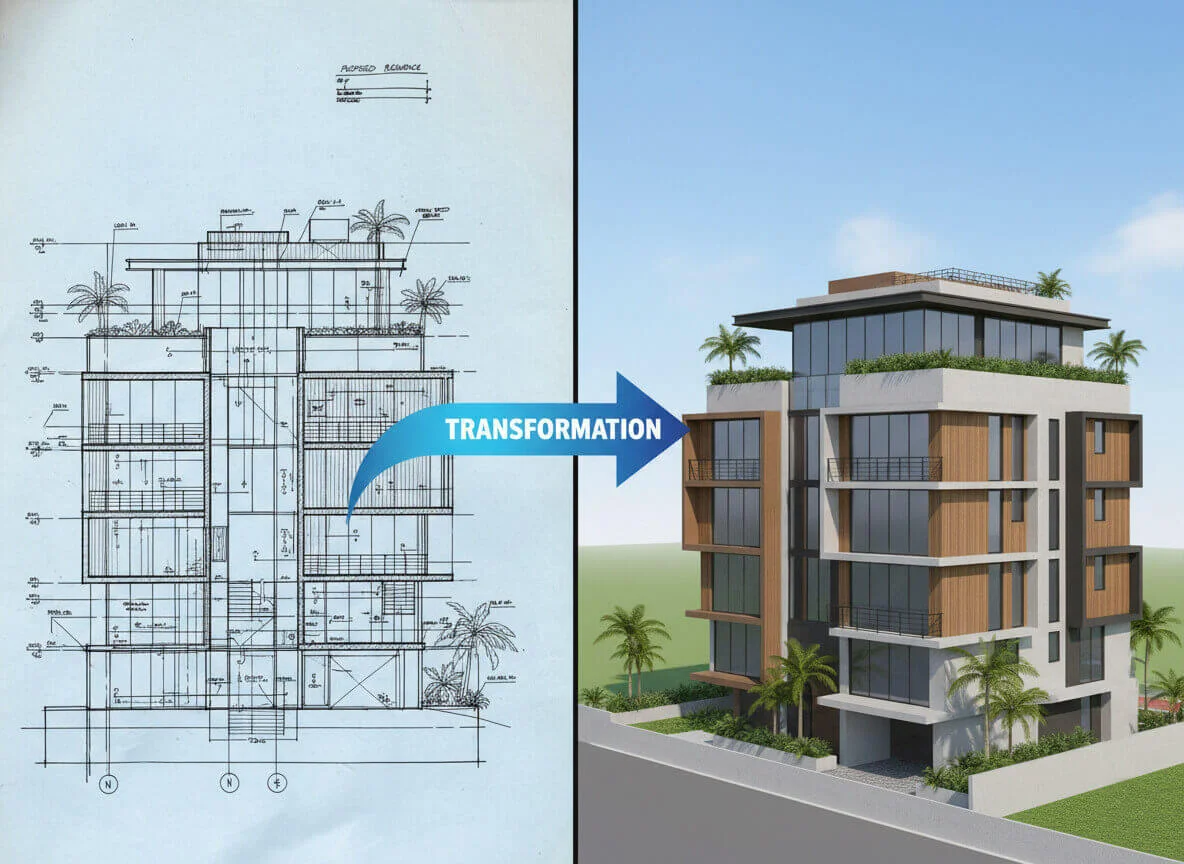
Architectural 3D modeling is the foundational process of taking two-dimensional designs and bringing them to life in a three-dimensional digital space. It represents a monumental shift from the flat, fragmented world of traditional drafting to a holistic, data-rich, and easily understandable virtual environment.
From 2D Blueprints to 3D Environments: The Big Shift
Per secoli, architects and builders relied on 2D blueprints—a collection of plans, sezioni, and elevations—to communicate design intent. While effective for trained professionals, these documents are abstract. They force stakeholders, especially clients, to mentally assemble a complex 3D puzzle from a stack of flat papers. This often leads to misinterpretations about spatial relationships, scala, and the final look and feel of a project.
3D modeling changes everything. It transforms those abstract lines into a tangible, virtual building that you can walk through, rotate, and inspect from any angle. It bridges the critical gap between imagination and reality, ensuring that what the architect designs is exactly what the contractor builds and what the client expects.
What are the different types of 3D Modeling in Construction?
The term “3Modellazione D” isn’t a one-size-fits-all concept. It encompasses a range of techniques and technologies, each with its own strengths and applications within the AEC industry. Understanding these types is key to choosing the right tool for the job.
| Modeling Type | Descrizione | Primary Use Case in AEC |
|---|---|---|
| 3D CAD Modeling | Uses computer-aided design software for precise 2D and 3D drafting. It’s the foundational technique for creating digital drawings and models. | Creating initial designs, disegni tecnici, and converting 2D plans into 3D. |
| Bim (Costruire la modellazione di informazioni) | Creates intelligent 3D models where objects contain rich data (per esempio., Materiali, costo, manufacturer). It’s a process, not just a model. | Large-scale projects requiring deep collaboration, clash detection, and lifecycle management. |
| Modellazione parametrica | Uses rules, parameters, and constraints to create adaptive models. Changing one parameter (like a floor height) automatically updates the entire design. | Complex facade design, structural optimization, and rapid design iteration. |
| Reality Capture & Scan-to-BIM | Uses laser scanners (LiDAR) or photogrammetry (drones) to create a highly accurate 3D model of an existing, real-world site or building. | Renovation projects, as-built documentation, and historical preservation. |
| Digital Twin Technology | A live, dynamic 3D model that is connected to the physical building through sensors (IoT). It updates in real-time to reflect the building’s current state. | Post-construction facility management, predictive maintenance, and operational monitoring. |
IL 10 Core Benefits: How 3D Modeling Transforms Architectural and Construction Workflows
Adopting 3D modeling isn’t just about creating prettier pictures; it’s a strategic decision that delivers tangible benefits across every phase of a project, from the first sketch to the final handover.
1. How does 3D modeling enhance visualization and design clarity?
The most immediate and profound benefit of 3D modeling is its ability to provide a clear, realistic, and holistic view of a project. It eliminates the guesswork inherent in 2D blueprints. Stakeholders no longer have to imagine what a space will feel like; they can see it. With 3D models, puoi:
- Perform virtual walkthroughs, allowing clients to experience the spatial flow and scale of their future building.
- Visualize from any angle, including aerial “bird’s-eye” views to understand the building’s relationship to its site.
- Study lighting and shadows at any time of day or year, ensuring spaces are filled with natural light as intended.
- See material finishes in context, helping clients make confident decisions on everything from flooring to facade textures.
This level of visual clarity ensures everyone is on the same page from day one, laying the foundation for a smoother project.
2. How does 3D modeling help in early error and clash detection?
This is arguably the single most significant cost-saving advantage of 3D modeling. In traditional workflows, conflicts between different building systems—like a plumbing pipe running through a steel beam—are often discovered on-site, leading to expensive delays and rework. 3D modeling prevents this through a process called clash detection.
By integrating the separate 3D models from the architectural, strutturale, and MEP (Mechanical, Electrical, and Plumbing) teams into a single federated model, specialized software can automatically run checks to find every single point where elements physically interfere. Per esempio, one construction firm, Mortenson Construction, identified nearly 600 issues in a data center’s 3D model before construction began, saving an immense amount of time and money.
3. How does 3D modeling improve collaboration and communication?
A 3D model acts as a common visual language that everyone involved in a project can understand. It breaks down the communication silos that often exist between the design office and the construction site.
The 3D model becomes the single source of truth, a central hub where architects, Ingegneri, appaltatori, and clients can all review, comment, and coordinate.
For non-technical stakeholders like clients or investors, a 3D walkthrough is infinitely more understandable than a stack of blueprints. For contractors and subcontractors, it provides an unambiguous guide to what needs to be built. Cloud-based platforms like Autodesk Construction Cloud (formerly BIM 360) take this even further, allowing entire teams to collaborate on the same model in real-time, regardless of their physical location.
4. How does 3D modeling lead to significant time and cost savings?
The financial benefits of 3D modeling are a direct result of the efficiencies it creates. By front-loading the effort into the digital phase, you dramatically reduce risk and waste in the physical phase. The key savings come from:
- Rilavorazione ridotta: Catching clashes and errors in the model prevents costly demolition and rebuilding on site.
- Faster Project Timelines: Clear visuals lead to quicker client approvals and permit acquisition. Better coordination reduces construction delays. One study showed a 22% faster project completion rate.
- Accurate Cost Estimation: Intelligent 3D models (like BIM) allow for precise quantity takeoffs, leading to more accurate material orders and less waste.
- Fewer RFIs and Change Orders: When the design intent is clear, contractors have fewer questions (Requests for Information) and need to make fewer changes, keeping the project on schedule and on budget.
5. How does 3D modeling boost creative freedom and design iteration?
By handling the heavy lifting of visualization, 3D modeling liberates architects to focus on what they do best: progetto. The ability to quickly and easily test ideas in a virtual environment encourages experimentation and innovation.
Want to see how a complex, curved facade will look? Or test five different roof forms? In a 2D workflow, this would be a time-consuming redrawing effort. In a 3D workflow, it can be a matter of minutes. This iterative process allows architects to refine their designs with more confidence, pushing the boundaries of what’s possible and ultimately arriving at a better final product.
6. How does 3D modeling streamline project approvals?
Getting approvals—from clients, investitori, and regulatory bodies—is often a major bottleneck in a project’s timeline. 3D modeling acts as a powerful catalyst to speed up this process.
- Per i clienti: Immersive virtual tours and photorealistic renderings give clients a deep, emotional understanding of the project. This builds confidence and leads to faster, more decisive sign-offs on design milestones.
- For Authorities: 3D models can be used to clearly demonstrate a project’s compliance with zoning laws, accessibility standards, and fire safety regulations. Instead of asking for clarification on an abstract drawing, planning authorities can see the design in context, leading to smoother and faster permit approvals.
7. How can 3D models be used for marketing and client engagement?
Long before a project is complete, its 3D model is already a powerful marketing asset. High-quality 3D visuals are the cornerstone of modern real estate marketing, used to:
- Create stunning, photorealistic renderings for brochures, siti Web, e cartelloni pubblicitari.
- Produce cinematic animated flythroughs and walkthroughs that tell a compelling story about the property.
- Develop interactive virtual tours that allow potential buyers to explore a property from anywhere in the world.
These tools are invaluable for pre-selling residential units, attracting commercial tenants, and securing investment for a project before it’s even built.
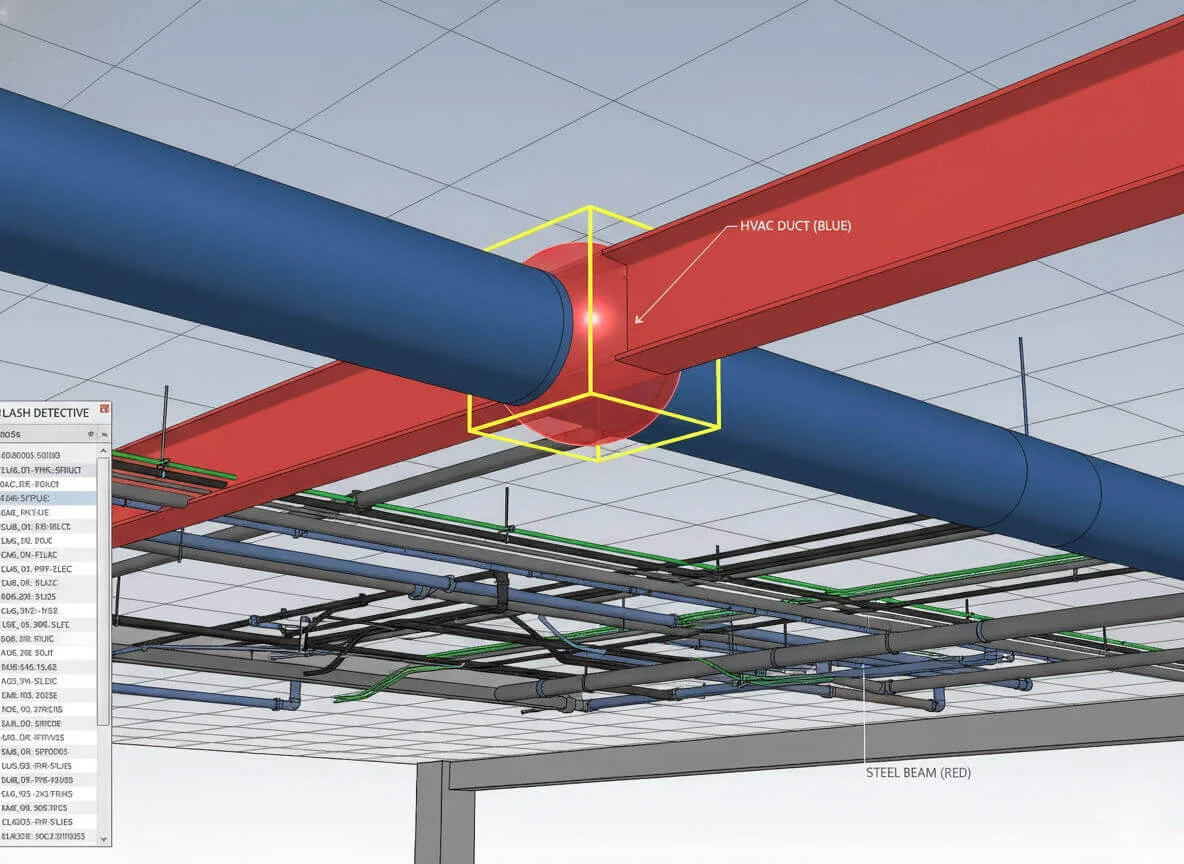
8. How does 3D modeling increase accuracy and precision?
Modern 3D models are more than just pretty pictures; they are highly accurate digital prototypes. Especially in a BIM workflow, every element in the model corresponds to a real-world component with precise dimensions and specifications. This accuracy is critical for:
- Generating precise construction documents.
- Ensuring tight tolerances are met.
- Facilitating prefabrication and modular construction, where components are manufactured off-site and must fit together perfectly during assembly.
9. How does 3D modeling improve safety planning on construction sites?
Safety is paramount in construction, and 3D modeling provides powerful new tools for proactive safety management. By linking the 3D model to the construction schedule (un processo noto come 4D BIM), teams can simulate the entire construction sequence. Safety managers can use these simulations to:
- Identify potential hazards at different project phases.
- Plan crane paths and material hoisting zones to avoid collisions.
- Map out site logistics, laydown areas, and safe access routes.
- Visually train workers on complex or high-risk tasks.
10. How do 3D models support a building’s full lifecycle?
The value of a 3D model doesn’t end when construction is complete. An accurate “as-built” 3Modello D or a live Digital Twin becomes an invaluable asset for the building’s owner and facility management team. This digital record can be used for:
- Ongoing Maintenance: Easily locate pipes, wires, and equipment within walls for repairs.
- Operations: Monitor energy usage and system performance in real-time.
- Future Renovations: Provide future architects and designers with a perfect digital starting point for any additions or alterations.
This long-term value makes the initial investment in 3D modeling even more compelling.
Strumenti del commercio: Popular 3D Modeling Software for AEC Professionals
Choosing the right software is a critical step in adopting a 3D workflow. The ideal tool often depends on your specific role, project type, and existing software ecosystem. Here’s a look at the top contenders in the AEC industry.
| Software | Developer | Caso d'uso primario | Key Features for Architects/Contractors |
|---|---|---|---|
| Revit | Autodesk | Costruire la modellazione di informazioni (Bim) | Intelligent modeling with data, real-time collaboration, integrated documentation. |
| Sketchup | Trimble | Conceptual Design & 3D Sketching | Intuitive push-pull modeling, vast 3D Warehouse library, easy learning curve. |
| Archiicad | Graphisoft | BIM for Architecture | Powerful tools for architects, strong 2D/3D integration, user-friendly BIM. |
| AutoCAD Architecture | Autodesk | 2D Drafting & 3D Modellazione | Familiar CAD interface with architectural-specific tools for walls, porte, finestre. |
| Rinoceronte (with Grasshopper) | Robert McNeel & Assoc. | Complex Geometry & Progettazione parametrica | Freeform NURBS modeling for complex curves, visual scripting with Grasshopper. |
| 3ds max | Autodesk | High-End Visualization & Animazione | Advanced modeling tools, powerful rendering (with Arnold), and animation capabilities. |
| Miscelatore | Blender Foundation | All-in-One 3D Creation (Gratuito) | Comprehensive toolset for modeling, scultura, e rendering; completely free. |
Beyond the Model: A Deeper Look at BIM and Digital Twins
Come abbiamo visto, not all 3D models are the same. Understanding the distinction between basic 3D CAD, intelligent BIM, and live Digital Twins is key to grasping the full potential of this technology.
What is the difference between 3D CAD, Bim, and Digital Twins?
These terms represent an evolution in how we think about digital models. While they all use 3D geometry, their purpose and capabilities are vastly different.
| Caratteristica | 3D CAD Modeling | Costruire la modellazione di informazioni (Bim) | Digital Twin |
|---|---|---|---|
| Core Function | Represents the geometry of an object. | Represents the geometry and information of a project. | A live, virtual replica of the physical asset and its processes. |
| Integrazione dei dati | Primarily visual. Data is not embedded in the geometry. | Deeply integrated. Every object is a smart component with data attached. | Live data integration. The model is continuously updated by real-world sensors. |
| Lifecycle Stage | Mainly used in the design phase. | Used throughout the entire lifecycle, from design to demolition. | Primarily used in the operational phase, post-construction. |
| Key Output | Drawings and visual representations. | A coordinated database for the entire project. | A real-time operational tool for monitoring and predictive maintenance. |
Practical Integration: Best Practices for Architects and Contractors
Adopting 3D modeling is more than just buying software; it’s about integrating new workflows into your daily practice. Here are some best practices for both sides of the aisle.
Best Practices for Architects
- Start in 3D Early: Use 3D modeling from the very beginning for conceptual massing and spatial studies to make more informed decisions from the start.
- Create Immersive Presentations: Go beyond static images. Use virtual tours and flythroughs to give clients a true sense of the space and get faster, more enthusiastic approvals.
- Collaborate in a Federated Model: Work with your engineering consultants in a shared, integrated model to proactively resolve coordination issues instead of waiting for them to become problems.
- Leverage Parametric Tools: For complex elements like facades or unique structures, use parametric design tools like Grasshopper to rapidly explore and iterate on innovative solutions.
Best Practices for Contractors
- Link the Model to the Schedule (4D): Integrate the 3D model with the construction schedule to create a 4D simulation. This allows you to visualize the entire construction sequence, optimize logistics, and identify potential phasing issues.
- Use the Model for Quantity Takeoffs (5D): Leverage the data in the BIM model to generate accurate material quantities, leading to better cost estimation and less waste.
- Run Clash Detection Regularly: Make clash detection a routine part of your weekly coordination meetings to ensure all trades are aligned before fabrication and installation.
- Take the Model to the Field: Equip your site supervisors with tablets loaded with the 3D model. This allows them to verify installations, clarify details, and solve problems on the spot by comparing the digital plan to the physical reality.
Conclusione: Building a Better Future with 3D Modeling
The evidence is clear: 3D modeling is no longer a niche specialization or an optional luxury. It has become a foundational technology for the modern Architecture, Ingegneria, and Construction industry. The shift from abstract 2D drawings to intelligent, data-rich 3D models represents one of the most significant leaps forward in how we design and build. The core benefits—unparalleled clarity, massive efficiency gains, and significant cost savings—are too powerful to ignore.
Abbracciando questa tecnologia, architects can unleash their creativity with more freedom, while contractors can execute those visions with greater precision and confidence. It fosters a truly collaborative environment where the entire project team, including the client, is aligned and working from a single source of truth. The future of construction is being built twice: first in the digital realm, then in the physical world. This digital-first approach is the key to creating better, safer, and more sustainable buildings.
For those looking to harness these benefits without the steep learning curve or investment in building an in-house team, partnering with a dedicated 3D modeling studio offers a direct path to success. These specialized services provide access to expert talent and cutting-edge tools, allowing you to integrate the power of 3D visualization into your projects seamlessly. Are you ready to lay your digital foundation?
Domande frequenti (FAQ)
What is the main purpose of 3D modeling in construction?
The main purpose is to create a complete and accurate digital representation of a building before it is constructed. This virtual model serves as a central source of information that enhances visualization, improves communication and collaboration, allows for early error detection, and ultimately saves time and money throughout the project lifecycle.
How does 3D modeling reduce costs and save time on a project?
3D modeling saves time and money primarily by preventing costly mistakes. By running “clash detection,” teams can find and fix conflicts between systems (like pipes and beams) digitally, instead of on the construction site. It also speeds up client approvals with clear visuals and provides accurate data for material estimates, reducing waste and delays.
What is the best 3D modeling software for architects and contractors?
There isn’t one “migliore” software, as it depends on the task. For integrated, data-rich projects (Bim), Autodesk Revit is the industry standard. For quick conceptual design, Sketchup is incredibly popular and user-friendly. For complex, forme organiche, architects often turn to Rinoceronte. The key is to choose the tool that best fits your specific workflow and project requirements.
What’s the real difference between a 3D model and BIM?
A basic 3D model represents the geometry—the shape and size—of a building. A BIM (Costruire la modellazione di informazioni) model is an intelligent 3D model. In BIM, every object (like a door or a window) is a smart component that contains a rich database of information, such as the manufacturer, materiale, costo, and fire rating. BIM is a process for managing this information throughout a building’s lifecycle.
Can 3D models be created for existing buildings, not just new ones?
SÌ, absolutely. This process is called Reality Capture O Scan-to-BIM. Using technologies like 3D laser scanning (LiDAR) or photogrammetry (often with drones), a highly accurate digital 3D model of an existing building can be created. This is essential for renovation, historical preservation, and facility management projects.
How exactly does 3D modeling help with client communication and getting approvals?
3D modeling replaces abstract 2D blueprints with immersive, easy-to-understand visuals. Clients can take virtual walkthroughs of their future space, see realistic renderings of how materials will look, and understand the scale and feel of a design. This deep level of understanding builds client confidence, allows them to provide more meaningful feedback, and leads to much faster and more enthusiastic project sign-offs.
Is it better to have an in-house 3D modeling team or to outsource?
This is a strategic business decision. Maintaining a skilled in-house team can be expensive due to software licenses, high-end hardware, and ongoing training. Outsourcing 3D modeling services can be highly cost-effective, providing access to specialized expertise and the latest technology on a project-by-project basis. This allows firms to scale their capabilities up or down as needed and focus on their core competencies, like design and project management.


